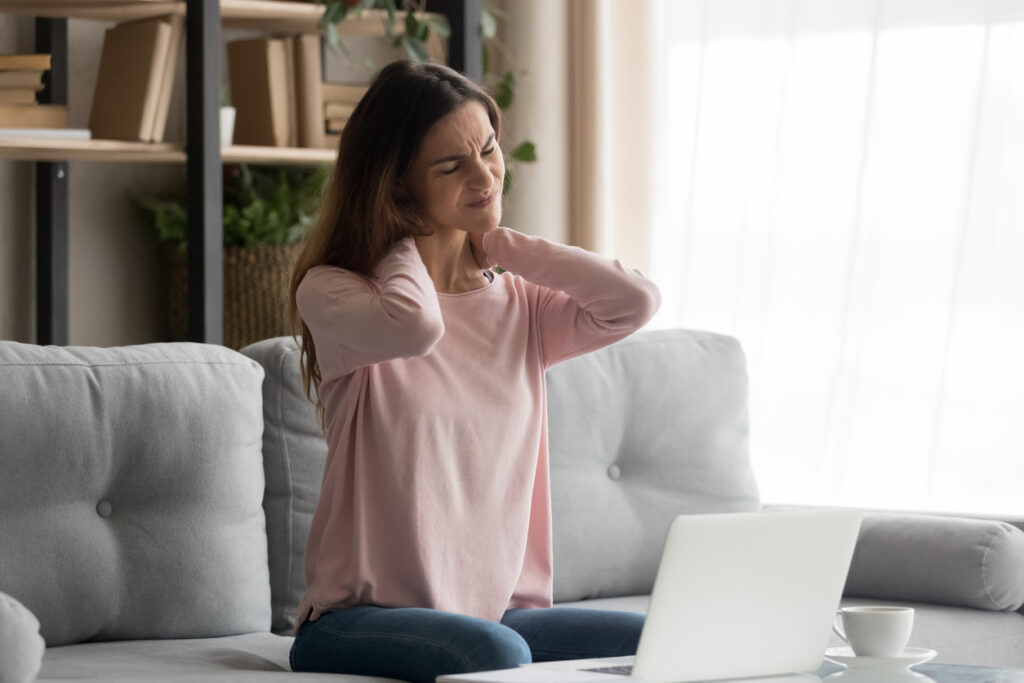The Government’s advice that people should work from home where possible, to help contain the spread of Coronavirus, has left almost every employer and employee facing potential health and safety risks of home working.
Employers retain the same health and safety responsibilities for home workers as they do for those in the workplace. The problem is it’s common for companies to forget to regularly review and update their safety policies which can include a ‘Work from Home’ policy, and the average home is not designed to be a workplace.
With the majority of UK workforces now working remotely, it’s important for HRs to turn their attention to their homeworking policies if not done so already, to check the company is compliant and operating in practice.
Give employees reasonable flexibility on delivering work, relax deadlines where possible, and ask managers to check in on how employees are coping.
Is the home office fit for purpose?
Start with the most obvious risk, which is employees sitting at a makeshift desk such as the dining table, hunched over a laptop on the sofa, or sitting on the spare bed to benefit from being plugged directly into the internet router. None of these are ideal scenarios. Other obvious issues are trailing power cables and glare from laptop screens and monitors.
In the standard workplace, the Health and Safety Executive (HSE) advises employers that regular written workplace risk assessments should be carried out, particularly if workers use display screen equipment (DSE) continuously for more than an hour daily, as part of their normal work.
This involves looking at the whole workstation, including equipment, furniture, and work conditions; the job being done; and any special requirements of a member of staff, for example a user with a disability.
The HSE has indicated that there is no increased risk of the use of DSE for those working at home temporarily, and that employers do not need to carry out home workstation risk assessments. However, there is a downloadable PDF DSE checklist on the HSE website for home working employees which is worth sharing and encouraging employees to complete as part of the company’s health & safety policies, and evidence of compliance.
Also, remind employees who are using DSE to break up long spells of computer screen work with rest breaks (at least five minutes every hour) or a change in activity. Provide written guidance, asking staff to avoid awkward, static postures by regularly changing position, getting up and moving around, or do some stretching exercises, and avoid eye fatigue by changing focus regularly.
Before sitting down to work each morning, ask employees to carry out a brief risk assessment, looking for trailing cables and ensuring the DSE is free from glare.
For employers that require specialist equipment, the HSE suggests allowing workers to take equipment that they normally use in the office, such as keyboards and mouse, home with them. For larger items like ergonomic chairs or height-adjustable desks, suggest alternative ways of creating a comfortable working environment like using supporting cushions.
Protecting staff’s mental wellbeing
There are also other less physical health and safety risks that home workers face when isolated from colleagues, in particular those living alone, which may cause mental wellbeing problems.
Communicate to line managers and leaders signs of stress to be aware of in their employees such as mood swings, signs of withdrawal, loss of motivation, commitment and confidence, and increased emotional reactions like being more tearful, sensitive or aggressive.
The HSE updated its lone-working guidance to reflect the Government’s advice “to keep in touch with lone workers, including those working from home, and ensure regular contact to make sure they are healthy and safe.”
The last thing companies want is employees off sick due to injury or pain caused by poor home working practices, or even worse, a claim made against the business.
Ensure managers are frequently liaising with their remote team members, ideally via video conferencing to maintain that human touch. Face time enables line managers to check in on the physical and mental wellbeing of the employee, to help spot any signs of stress early, and to ensure staff continue to feel a valued part of the business.
If there are still members of the team working in the office, share their details with remote workers in case there is a need to visit the office but stress that this is only where absolutely necessary, and reiterate the social distancing guidelines of staying two metres away from others.
[cm_form form_id=’cm_65a14c3f5da64′]
Juggling commitments
Consider other more wide-reaching stresses home workers are facing due to the specific Government directive around Covid-19, such as having to adapt to working with other family members in the household or juggling looking after children while schools remain closed.
Give employees reasonable flexibility on delivering work, relax deadlines where possible, and ask managers to check in on how employees are coping with juggling commitments or if there are ways they can work better together to the benefit of the business and employee.
Keep updated
The Government’s advice for employers is evolving at pace during the Coronavirus pandemic. It’s important for HR to appoint a small team responsible for keeping up to date on new directives as they appear, and weaving these into the company’s HSE policy, which then needs communicating clearly to all employees no matter where they’re working from.
The last thing companies want is employees off sick due to injury or pain caused by poor home working practices, or even worse, a claim made against the business.
Should there be a breach of an employers’ health and safety obligations during the course of work – carried out at home or in the office – the first document the HSE will want is the company’s health and safety policy as evidence that the company took steps to avoid any risks in accordance with the latest Government guidance.
With the majority of the workforce home working for the first time, it is an unusual time for UK businesses. But, an employer’s legal obligation to keep staff healthy and safe remains the same, which will only be a benefit to the company once normal business resumes.








